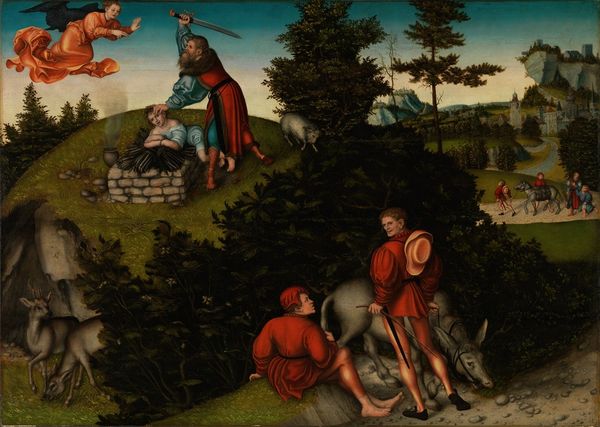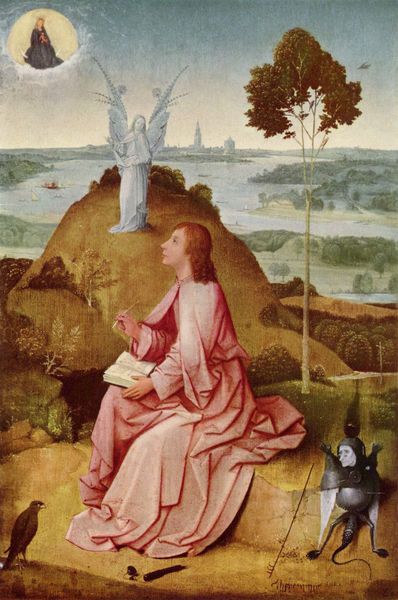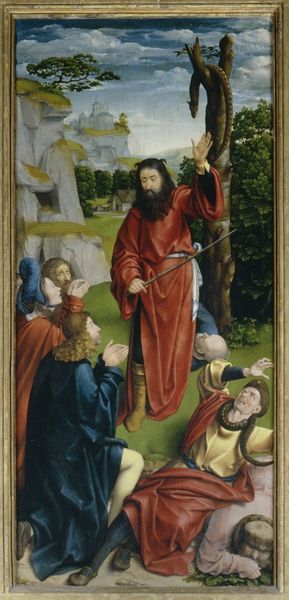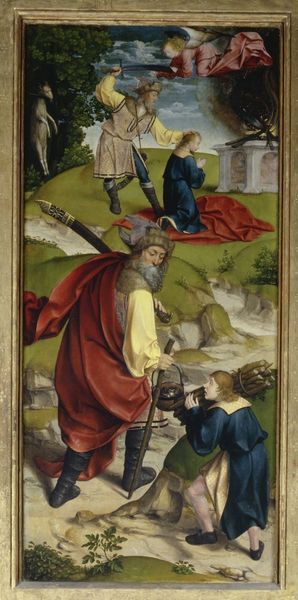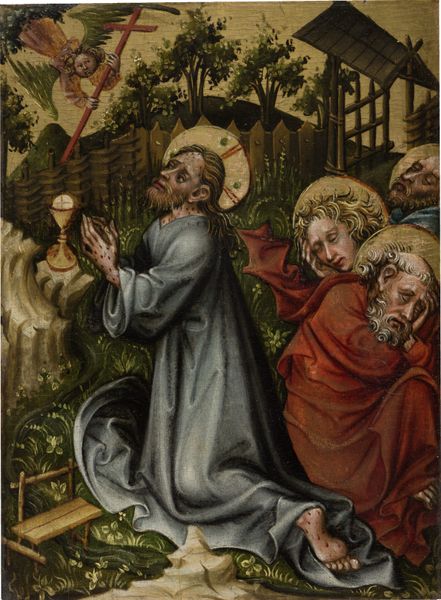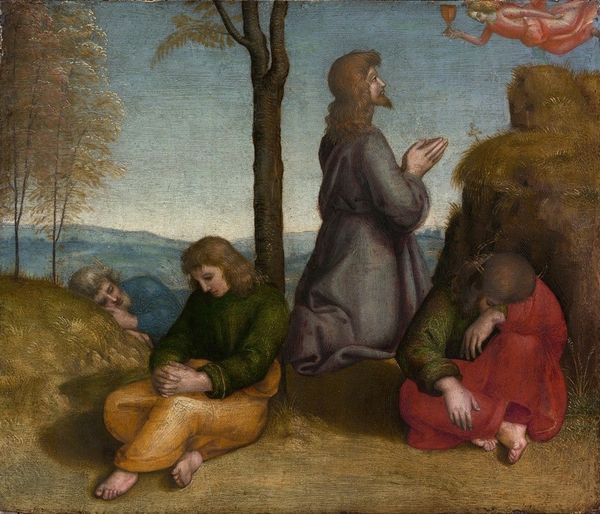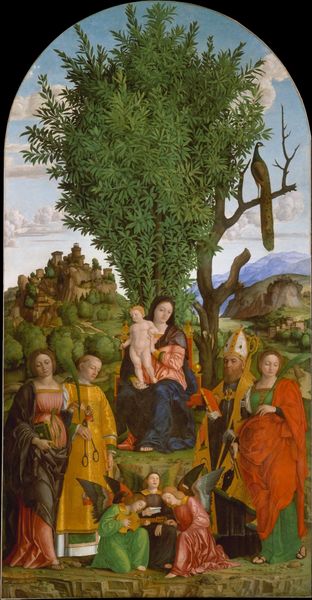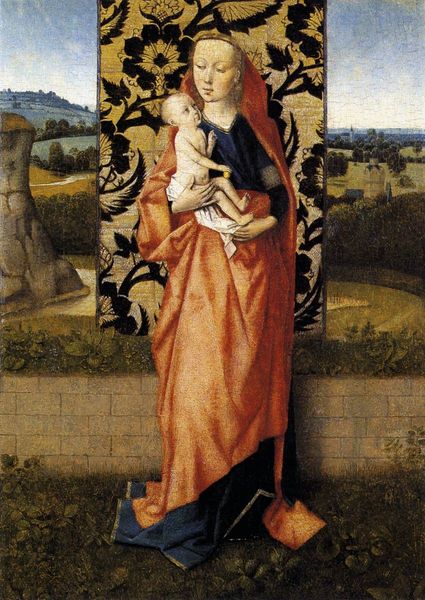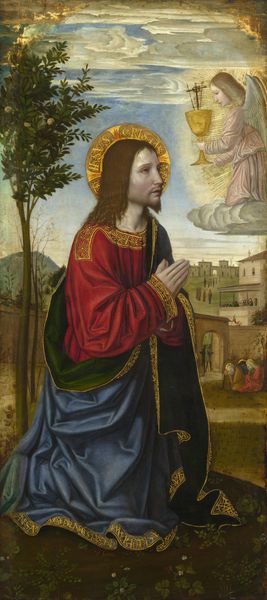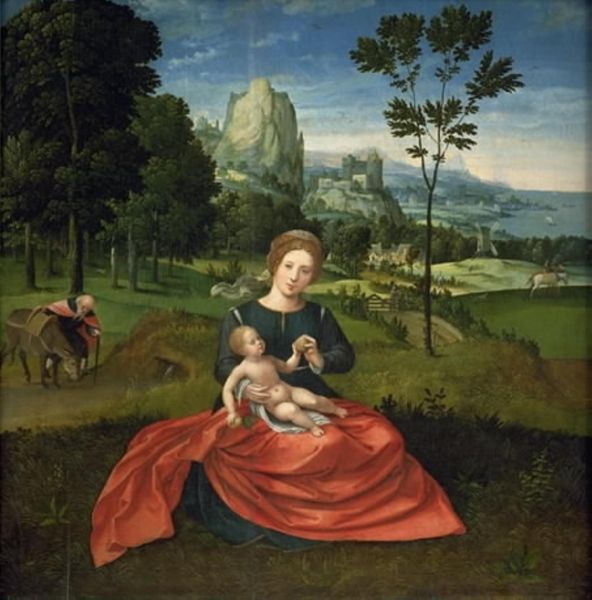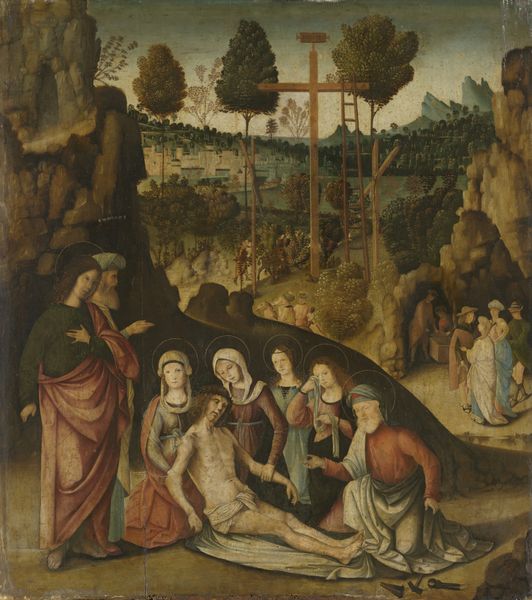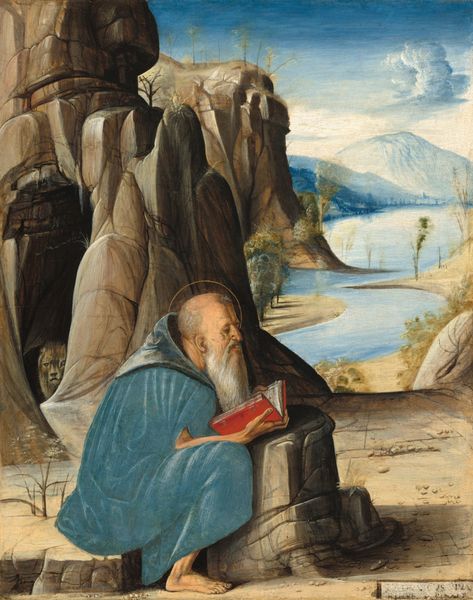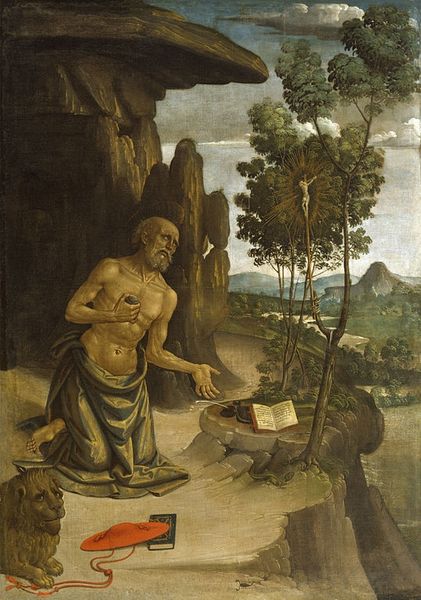
panel, oil-paint
#
portrait
#
panel
#
oil-paint
#
landscape
#
figuration
#
oil painting
#
underpainting
#
christianity
#
history-painting
#
early-renaissance
#
portrait art
Copyright: Public domain
Curator: Here we have Dirk Bouts’ "Saint John the Evangelist on Patmos," painted around 1465. It’s currently housed here at the Museum Boijmans Van Beuningen. Editor: Immediately, it strikes me as both serene and slightly unsettling. That tranquil landscape juxtaposed with, well, is that the devil lurking in the shadows? Curator: Indeed it is! This panel, executed in oil paint, shows John in exile, supposedly dictating the Book of Revelation. Notice the detailed landscape behind him. Early Renaissance painters, particularly those in the Netherlands, were really starting to master this representation. Editor: It's a fascinating detail, how the mundane, that beautiful detailed town, contrasts with the divine… or, perhaps, the infernal. Tell me, what would it have been like to produce something like this? How was Bouts making choices about his pigments and textures? Curator: Bouts was certainly interested in surface texture. He used oil paints on a wood panel, allowing him to build up layers of glazing to create realistic textures and luminosity. I imagine that panel came from the forest nearby, floated into the port in Rotterdam and transported to the workshop. Editor: There's also an undeniable, well, awkwardness to John’s pose, that heavy robe. Was that also intentional? To show his humanity in relation to the hellscape over there? Curator: That might be stretching it! It is common for artists to pose biblical characters in naturalistic settings; it helps the viewer find humanity in them, no matter how imperfect. We do know Bouts favored simple composition. The red robe might have a link to dyes being developed, showing a way for him to draw wealth and consumption in the burgeoning textile markets of Flanders and Bruges. Editor: Maybe it's that the scale feels slightly off—John seems almost too big for his surroundings. Perhaps, that throws us off and adds a level of uncanniness? Curator: I hadn't considered that, but it adds another layer. The imperfections, the raw material realities. It humanizes the spiritual story—and reminds us, doesn't it, that art-making itself is also an intensely material process. Editor: Precisely. It makes the divine tangible, earthly. Something flawed and beautiful and ultimately, human-made. Curator: A powerful reminder, indeed.
Comments
No comments
Be the first to comment and join the conversation on the ultimate creative platform.
